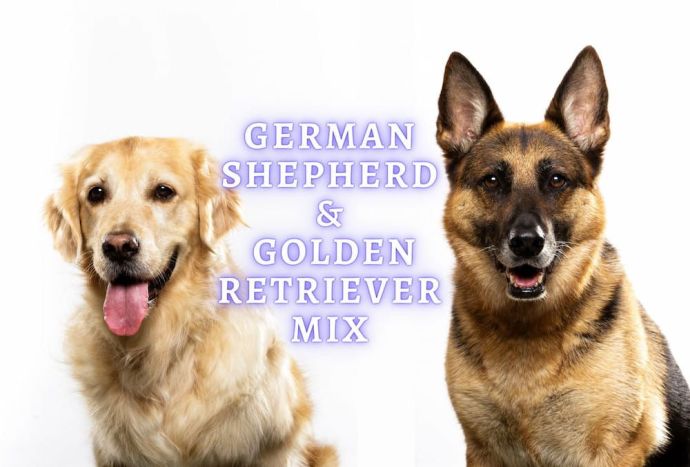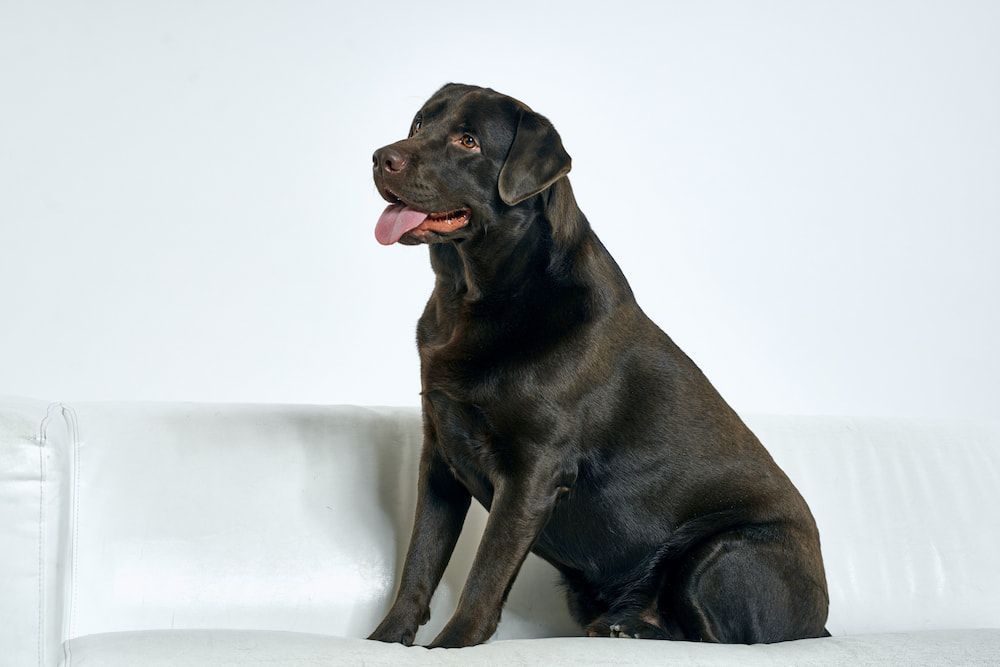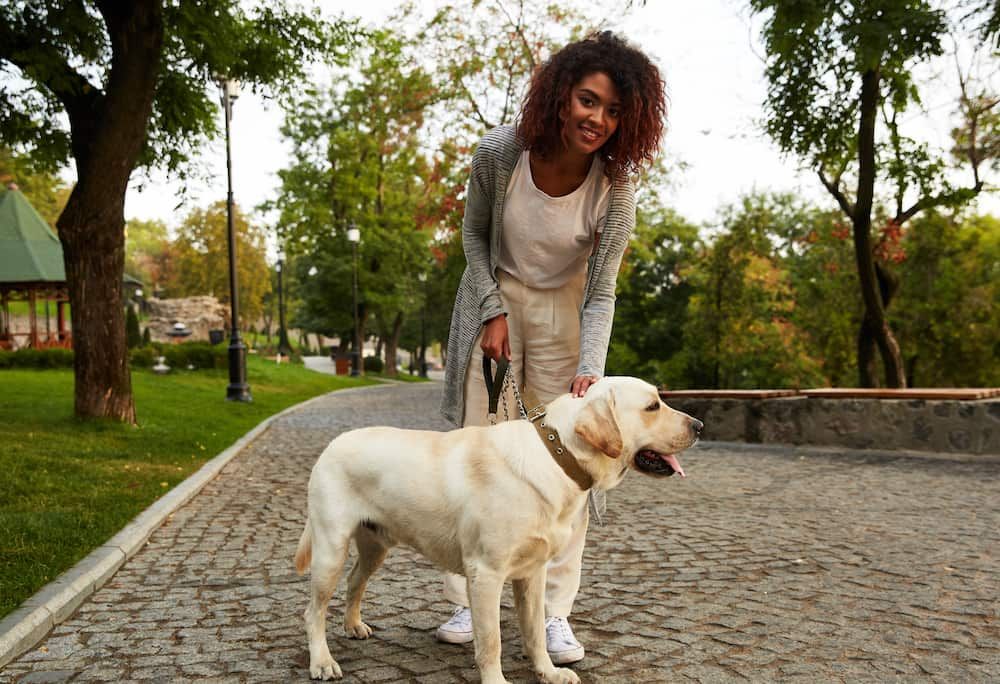English VS American Lab: Appearance, Activity, Temperament
Written by:
Author: Carol Young
Carol has worked in specialty, emergency, mixed animal and general veterinary practices, and enjoys all aspects of veterinary medicine. Her special areas of interest include anesthesia, critical care, emergency, dentistry, internal medicine and small animal nutrition.
View all 62 articlesLearn about our editorial process and veterinary review board.
Viewed: 269
Updated on: 12/29/2022
Many pet owners are familiar with the two more popular types of Laborador Retrievers, the English Labrador Retriever and the American Labrador Retriever. Although the American Kennel Club (AKC) does not formally distinguish the two types, most labs entered into dog shows in the U.S. are English labs since their characteristics are more desired over the American type.
The English and the American Labrador are classified as members of the Labrador Retriever breed; however, each type has particular physical and temperamental characteristics that set them apart from the others. Several things may interest you if you are curious about how these two popular types of labs differ.
History
The Labrador Retriever originated in Newfoundland, Canada, and was developed from the St. John’s Dog, a now-extinct water dog popular with the fisherman who worked amid the icy Atlantic waters of the area. The St. John’s Dog caught the eye of visiting English gentry in the early 19th Century. These individuals decided to bring several of these dogs back to England, where breeders worked to develop and standardize the Labrador breed.
The AKC recognized the Labrador Retriever breed in 1917.
Until the 1940s, there was only one variety of Labrador, but over the years, the two different types were developed in England and America. In England, breeders favored stockier-looking dogs; in the U.S., breeders favored a sleeker build with a finer hair coat. American breeders were looking for labrador retrievers with lots of energy to compete in field trials and hunting. At the same time, the English favored more mellow pups bred for dog shows and occasional hunting.
Characteristics Comparison
The most significant difference between English and American Labradors is size and build, but temperament and energy level also are factors.
Main Differences
- Build. The English Labrador is stockier and bulkier than the American Labrador. The English Lab has thick, short legs, a thick neck, and a large barrel chest, whereas the American Lab has a leaner build and narrower chest.
- Tail: It’s not just the build that sets apart the English from the American type. The tail of the English Labrador is even thicker and straighter, often known as an “otter” tail because of its size and how the tail looks when the dog is swimming. The tail of the American Lan is thinner and more curved.
- Leg length: The American Lab has longer legs than its English counterpart, giving it a more athletic and sleek appearance.
- Face and nose: The face of the American Labrador is narrower, and the snout is longer, and the English Lab’s head is wider, the muzzle shorter and the face fuller.
- Hair coat: Although both types have shorter hair coats, the American Lab has a thinner hair coat that is not as thick.
- Temperament: English Labradors tend to be calmer and more relaxed, and not as easily excitable or hyper. They are also known for their easy-going nature. The English type may be more appropriate for older owners or families with young children as they are calmer and more tolerant. However, English Labrador enjoys going for walks, hikes, playing ball as well as cuddling on the couch.
- Energy: American Labs are high-energy dogs, and love to play fetch, swim, run, hike and hunt. They were bred to be athletes and they live up to this. The American type is a good fit for active families and is perfect for keeping up on long treks, runs, and hikes. They make wonderful hunting dogs as well, able to chase down game and retrieve waterfowl during hunting season.
Unlike their mellow counterpart, the American Labrador is meant to work, so it’s no wonder this breed has a limitless amount of energy and endurance. Although American labs have lots of energy, they do require some downtime.
Appearance Comparison
English vs American Lab Size
Height: When comparing the English Lab and the American Labrador, the English variety is slightly shorter, ranging in height between 21.5 to 22.5 inches; the English is also stockier and heavier, with a blockier build and shorter legs. The American Labrador typically stands a bit taller, ranging from 21.5 to 24.5 inches, and has a sleeker, more athletic build and longer legs.
Weight: Male American Labradors weigh between 65 to 80 pounds, and females 55 to 70 pounds. English Labradors are a bit heftier, with males nearing 80 pounds and females 70 pounds.
English vs American Lab Temperament
All Labradors are friendly and sociable, and both the English and American Labradors are equally outgoing, smart, loving, and ready to please. However, there are some differences between American and English Labs when it comes to temperament and personality.
For example, the American Labrador is very active and athletic, and high-spirited, whereas the English Lab is a bit more mellow, relaxed, and better suited for less hyper pursuits like hanging out or going out for a lovely afternoon walk. American Labs are often stubborn, while English Labs are more apt to compromise and please their humans.
Because of their high energy, American Labradors are sometimes called Field Labs due to their athleticism and talents for hunting and field trials. English Labs are nick-named “Bench Labs” because they are more relaxed and more likely to sit “on the bench” and watch the world go by.
English vs American Lab Training
Some dog trainers think British Labradors are easier to train than American Labradors due to their strong instinct to please their humans and their natural ability to take discipline and quickly recover when making a mistake. However, you are looking for a more energetic canine pal. In that case, the American Lab might be a better choice, as they love to run and play and possess almost boundless energy and an adventurous and independent-minded attitude. The American type may take a bit longer to train, but as with all Labs, training can be easier with this breed due to its loving and friendly nature.
What are the Similarities?
As members of the Labrador family, the American and English Labradors have more in common than not, including several physical and personality traits.
- Coat Color: It is very common to see all three colors in American Labs, which include black, chocolate, and yellow, with “fox red” being a subcategory of yellow. Most labs tend to be black, as the dominant gene for hair color is black, and chocolate is less common as this color is based on a recessive gene. However, chocolate English Labs are very rare, perhaps because British breeders may not have desired the chocolate color when showing in the ring. Interestingly, many breeders avoid crossing two chocolate Labs because crossing two chocolate dogs could lead to certain health problems, such as ear issues and skin conditions. Studies have shown that chocolate labs have a higher degree of ear inflammation and dermatitis, about four times more than yellow or black labs. As a result, most breeders avoid breeding chocolate to chocolate because such health issues may result from the pairing of recessive genes.
- Friendliness: Both types respond well to many human contacts and excel at spending time with their humans, hiking, walking, and playing fetch. They also make great family dogs when adequately trained to mind small children. Both types enjoy retrieving, swimming, and playing games that involve spending time with their beloved humans.
- Intelligence: Although some Lab owners think that the American type is the more intelligent of the two, both are, in reality, quite smart. The English and American Labs have an innate desire to please, making them very trainable. When training a young Lab puppy, it’s vital to socialize her early to get her used to different environments, situations, and other animals.
Activity Levels, Training, and Exercise
- Activity Levels: As mentioned above, the English Lab is the more “mellow” and calm Lab, and the American Lab is the more athletic and energetic type. This is because of intentional breeding: One was bred for showing and hanging out with the family and/or its humans, and the other for hunting, flushing game, and field trials. If you are looking for a high-energy working dog, chances are you won’t be looking for a “couch potato.”Although English Labs are still active compared to other breeds, they are better suited as a family pet because they are less demanding than the American type when it comes to activity and might prefer chilling on the couch next to you at the end of a long day.
- Training: Because both Labs love people and are intelligent, this makes them fairly easy to train, but training must start when a puppy is young. Proper and consistent training is essential for any breed and even more crucial for a high-energy and intense breed such as the Lab. No one wants to be dragged around by a hyper dog, or have a dog that jumps on every visitor that comes through the door. However, because English Labs are more laid-back, they are considered easier to train for less-experienced dog owners. Many breeders consider field dogs easier to train than show dogs. A 2014 study [1] found that working dogs scored higher for trainability and fetching than show Labs, and working Labs scored significantly higher on responsiveness than show Labs in a 2016 study. [2] It’s important to remember that these differences could also be the result of owners training working dogs for work or field purposes, while show dog owners are typically less demanding of their dogs.
- Exercise: Since American Labs are more energetic and athletic than English Labs, they require a lot of regular activities. But the English Lab is still active: The English Lab enjoys a good swim or a nice hike as much as the American Lab does. As a group, Labradors are more active than smaller dogs such as a Chihuahua or a Shih Tzu and were bred for work, running, and swimming.
American labs are more active and ready for adventure, meaning they need plenty of daily exercises and human interaction. As a result, the American type may not be a good choice for individuals who are less active or don’t have time for walking, running, hiking, or playing.
Cost of Caring and Puppies’ Price
- Cost: If you buy a Labrador Retriever from a recognized breeder, English Labs and American Labs typically cost the same. Purebred American and English puppies can range from $800 to $1,200 [3] when purchased from a reputable AKC breeder. However, English Lab puppies may be more expensive if their bloodlines include show champions. If your puppy has a parent with a ‘show’ bloodline, you can expect to pay more than $2000.
- Caring: Make sure you can afford a dog and finance a lifetime of care that includes housing, diet, and veterinary care. American Labs are not usually seen in show rings, so you won’t see American Labrador puppies with show-quality parents. You may also see a parentage that includes field trial champions. If you are looking for a hunting or running partner, an American Lab puppy can be a great choice, but make sure that you train your puppy at an early age to ensure good habits down the line. Sometimes American Labs are found in shelters because owners cannot deal with their high exercise demands, so if you want to adopt an American Lab, visit local shelters or contact a rescue. Adopting a dog is much cheaper than buying from a breeder and will likely cost $100 to $300. If you’re lucky, you can find a puppy in a shelter. In the United States, English Labs are rarely seen at shelters, but you can still do some research and investigate rescues and other shelter organizations. If you are up for it, many Labrador mixes are looking for homes. Mixed breeds make excellent pets, and many have Lab-like personalities and temperaments.
Health and Diet
Well-bred American and English Labradors can be healthier overall, but health involves proper diet, exercise, and veterinary care. Most English and American Labradors live from 10 to 12 years of age. If you want to purchase a pure-bred puppy, ensure that the parents have been screened for genetic health conditions such as hip dysplasia, elbow dysplasia, retinal atrophy, and other conditions that can affect the breed.
As mentioned, breeding chocolate Lab pairs tend to produce offspring with skin and eye issues. Also, Labs as a group can have hereditary myopathy, a neuromuscular disorder in which the primary symptom is muscle weakness caused by muscle fiber dysfunction. Other health conditions can include certain cancers such as lymphoma.
If you purchase a pure-bred puppy from a healthy bloodline, you’ll have a healthy and happy canine for many years. However, always ensure you feed a well-balanced diet and keep your pup up to date on vaccines and veterinary checkups.
If you know Labradors, you probably know that they love to eat. As a result, obesity is a big problem for the breed and can lead to several health problems such as diabetes and orthopedic issues. If you have questions about your Lab’s diet, consult your veterinarian or a veterinary nutritionist. Providing a well-balanced diet that includes the necessary vitamins and minerals is essential for good health in your dog.
RELATED: Best Dog Foods for Weight Loss
Grooming
Labradors as a breed, have a double coat. As with other swimming breeds, such as the Golden Retriever, this double coat enables the hair to trap air, giving it more buoyancy while swimming. As a result, Labs can be big-time shedders. Most will shed, or “blow their coat” twice a year, but others will shed more regularly and in smaller amounts.
Incidentally, English Labradors may shed a bit more than American Labs, especially if they spend a lot of time indoors. However, it’s important to remember that each dog is an individual, and the amount of shedding and grooming needed will vary from dog to dog.
Although American and English Labs have shorter hair coats than other breeds, regular grooming can reduce the amount of hair in your home. Depending on your pup’s lifestyle, you may have to groom and or bathe more often. For example, if you have a field Labrador, you may need to bathe quite often and brush out any grass awns or weeds that can become entangled in the hair.
Read More: Australian Shepherd Golden Retriever Mix
Adoption and Shelters
Although purebred American and English Labs don’t turn up in shelters that often, you may have better luck contacting a rescue. Rescues also work closely with a lot of shelters and can notify you if a purebred or a mixed Lab is available and looking for a loving home. You can also do some online research, or visit your local animal shelter.
Last Words
If you are looking to add an English or an American Lab to your home, keep in mind your home environment, and how active or mellow you are as a person. If you love to hike, and run and are interested in field trials or hunting, then an American Lab might just be the perfect fit. If you’re looking for a more mellow and loyal pal for long walks or just hanging out, the English Lab may be a better fit.
People also ask
What’s the difference between American and English Labs?
Genetically, English and American Labs are the same, but it’s their physical appearance and level of energy that differ. English Labs tend to be stockier, and more barrel-chested; their faces and snouts are broader and robust, and their legs are shorter than American Labs. American Labs are the sports cars of the Lab world: Long legs, sleek body build, slimmer tails, and finer facial and snout features. Each is bred for different activities: The English for showing and calmer pursuits, and the American for high-energy activities such as running, flushing out game, and field trials.
Are English Labs more expensive than American?
Yes, English Labs tend to be more expensive than American Labs since they’re not as common in the U.S. and other countries. Also, if the Lab comes from a show bloodline, and is free of any health conditions, you can expect to pay $2000 or more for a puppy.
What is the calmest breed of the lab?
Although both types are adorable and love their humans, the English Lab is hands-down the calmer of the two. That’s not to say that the American Lab can’t be a great companion; it’s just that if you are looking for a calmer, less energetic canine pal, the English Lab is your better bet.
Article Sources:
- Lofgren, Sarah E., et al. “Management and Personality in Labrador Retriever Dogs.” Applied Animal Behaviour Science, Volume 156, July 2014, sciencedirect.com/science/article/abs/pii/S0168159114001099.
- Fadel, Fernanda Ruiz, et al. “Differences in Trait Impulsivity Indicate Diversification of Dog Breeds into Working and Show Lines.” Nature Scientific Reports, nature.com/articles/srep22162.
- “Labrador Retriever Price, Ownership Cost & Buying Guide.” Marvelous Dogs, marvelousdogs.com/labrador-retriever-price/.
 Dog Breeds Japanese Spitz: Everything about Japanese Spitz Health, Care, Puppies, and more
Dog Breeds Japanese Spitz: Everything about Japanese Spitz Health, Care, Puppies, and more - 1163
- 2
 Dog Breeds German Shepherd Golden Retriever Mix: Golden Shepherd Temperament, Care and Adoption
Dog Breeds German Shepherd Golden Retriever Mix: Golden Shepherd Temperament, Care and Adoption - 577
- 0
 Dog Breeds Best Emotional Support Dogs: 16 Best Breeds for Emotional Support Dogs
Dog Breeds Best Emotional Support Dogs: 16 Best Breeds for Emotional Support Dogs - 134
- 0
 Dog Breeds Alaskan Husky vs Siberian Husky: How can you tell an Alaskan Husky from a Siberian Husky?
Dog Breeds Alaskan Husky vs Siberian Husky: How can you tell an Alaskan Husky from a Siberian Husky? - 130
- 0
 Dog Veterinary Tips Why is my Dog throwing up: Causes and Preventing (Veterinary Advice)
Dog Veterinary Tips Why is my Dog throwing up: Causes and Preventing (Veterinary Advice) - 23424
- 5
 Dog Care Why Is My Dog Bleeding From Its Butt? Causes and treatment of rectal bleeding in the dog
Dog Care Why Is My Dog Bleeding From Its Butt? Causes and treatment of rectal bleeding in the dog - 22074
- 0
 Dog Care My Dog Keeps Scratching His Mouth: Reasons Why Your Dog Scratching Face
Dog Care My Dog Keeps Scratching His Mouth: Reasons Why Your Dog Scratching Face - 17560
- 1






















